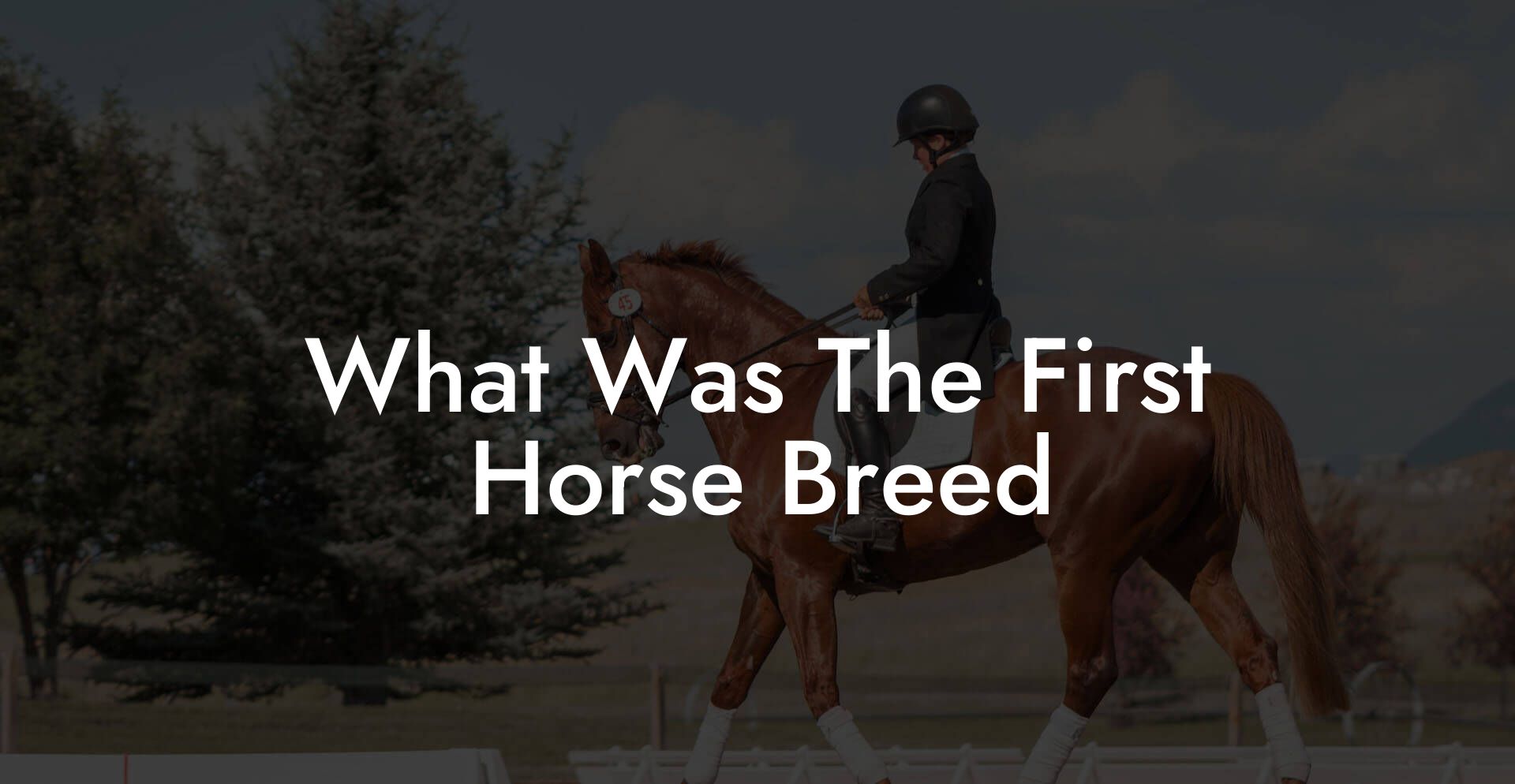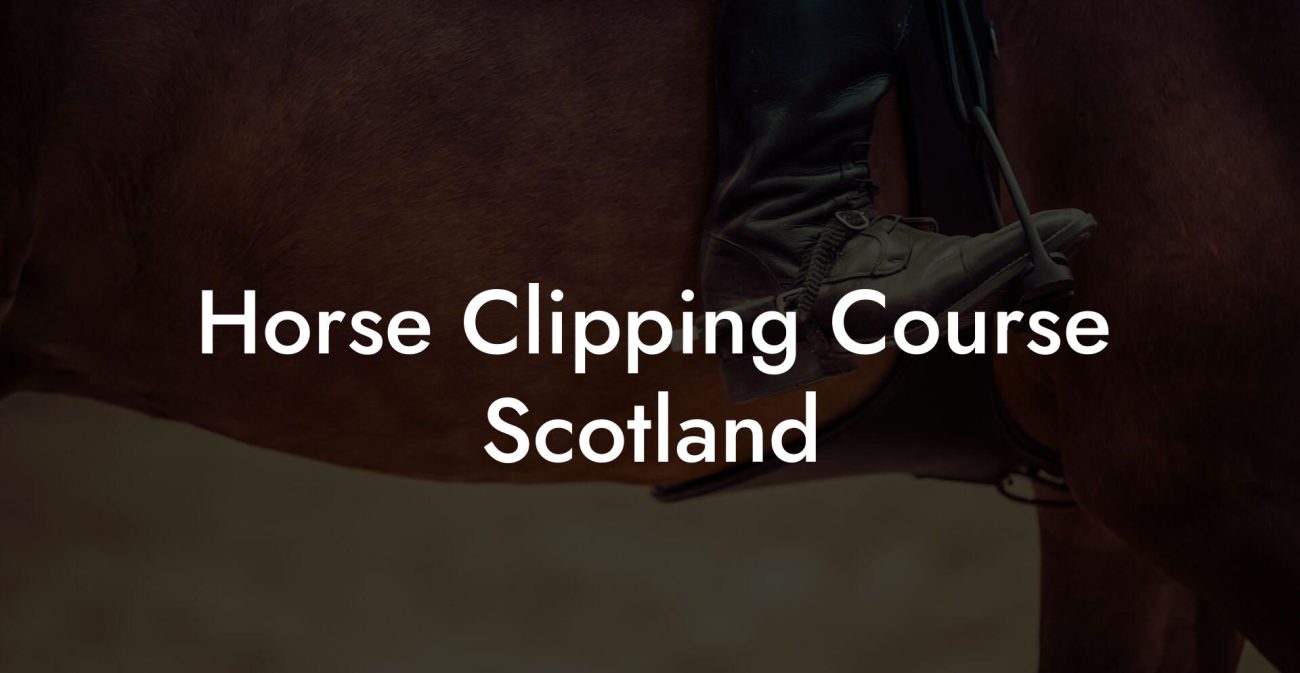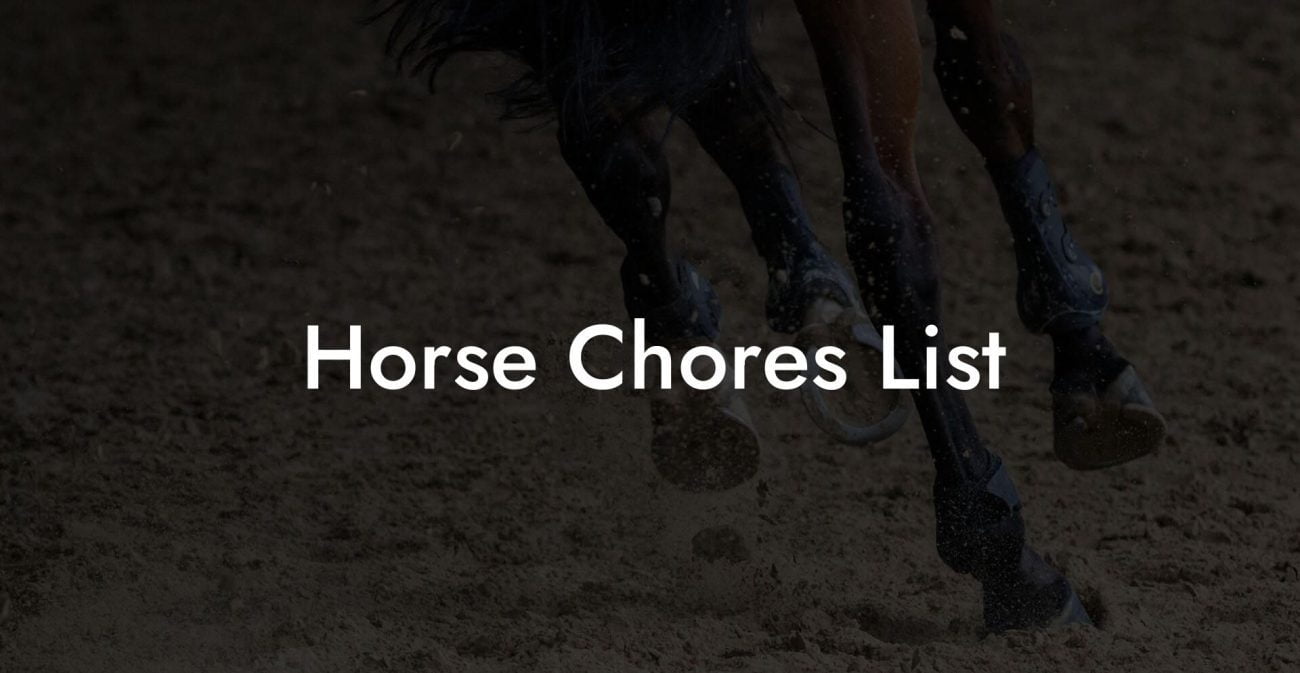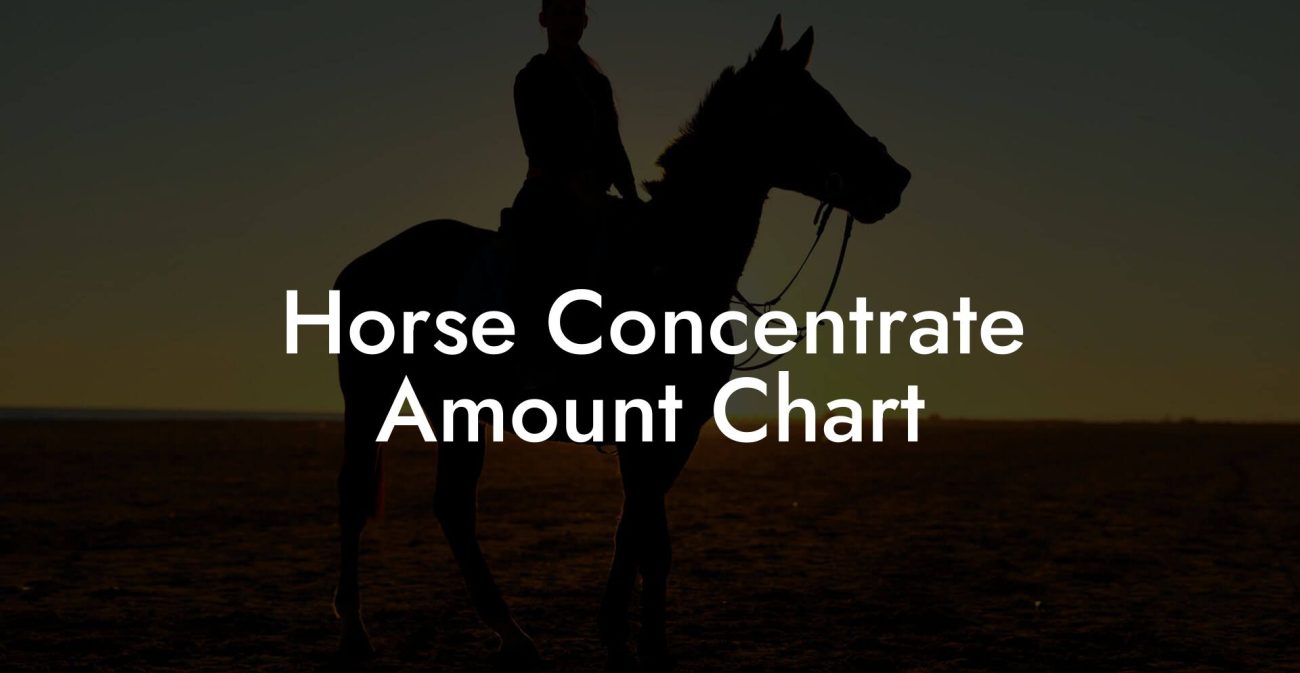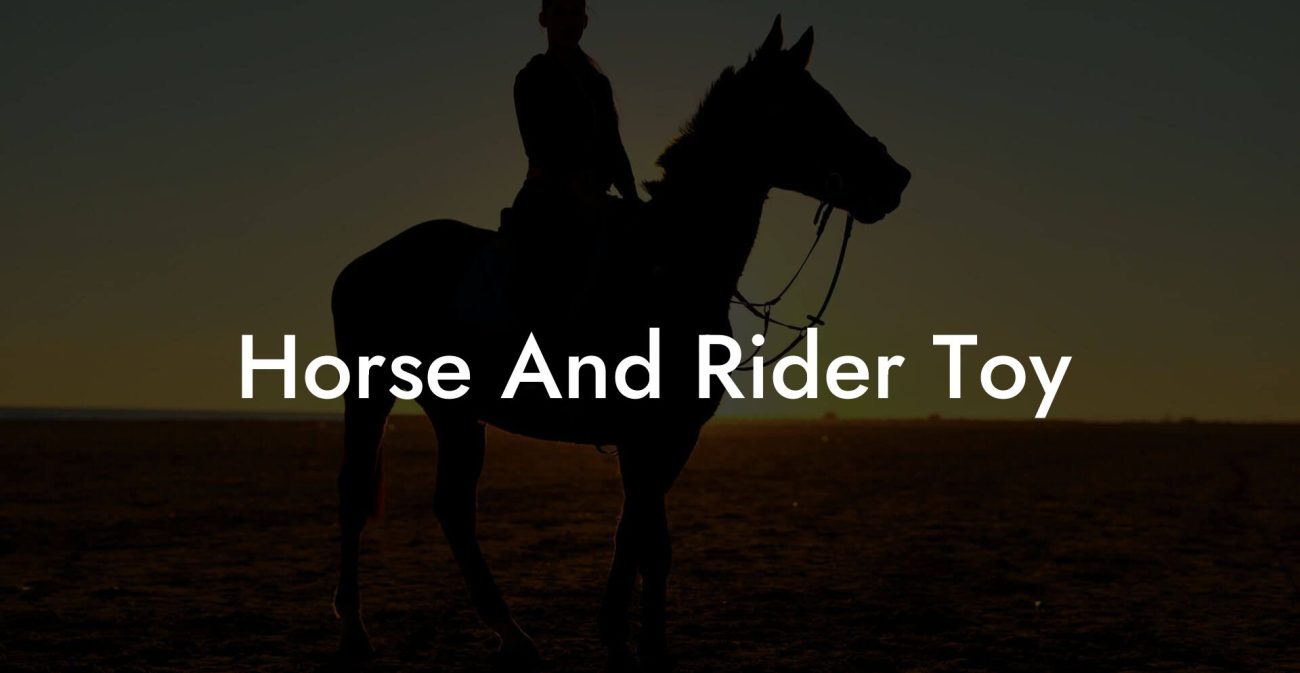Ever wondered where our majestic four-legged friends first trotted onto the stage of history? Grab your oat milk latte and settle in as we gallop through time to uncover the origins of the very first horse breed, a fascinating journey packed with ancient mysteries, wild genetic surprises, and plenty of practical, down-to-earth horse care tips perfect for today’s Gen-Z and millennial riders.
Quick Links to Useful Sections
- The Dawn of Equine History: An Introduction to Ancient Horse Breeds
- Decoding the Genetic Timeline: Which Horse Breed Came First?
- Unraveling the Mysteries of Horse Domestication
- Key Traits of Ancient and Modern Horse Breeds
- The Przewalski’s Horse: A Living Relic of the Past
- Tracing the Roots: The Botai Culture and Early Domestication
- Modern Horse Breeds: A Dynamic Legacy of Innovation and Tradition
- Horse Care Essentials: Bridging Ancient Wisdom and Modern Practices
- 1. nutrition: Fueling the Fire
- 2. Grooming and Hygiene: A Time-Honored Ritual
- 3. Exercise and Mental Engagement
- 4. Veterinary Care and Preventative Practices
- 5. Creating a Safe and Stimulating Environment
- Equine Health and Wellness: Innovative Approaches for the Modern Rider
- Equestrian Trends: What Modern Riders Can Learn from Ancient Breeds
- Resources and Community Support: Your Next Steps in Equine Care
- The Future of Horse Breeding and Care: Where History Meets Innovation
- Frequently Asked Questions on Ancient Horse Breeds and Modern Care
- Embracing Your Equine Journey: A Synthesis of Past and Present
The Dawn of Equine History: An Introduction to Ancient Horse Breeds
Horses have been more than just a mode of transportation; they’ve been our companions in warfare, partners in farming, and symbols of freedom since time immemorial. But when it comes to answering the burning question, “What was the first horse breed?” the story is anything but straightforward. The origins of the horse can be traced back millions of years, with early species evolving, diverging, and adapting to life on the vast steppes of Eurasia.
Modern scientific research and archaeological discoveries have fueled debates among historians and geneticists. Whether you're a budding equestrian, a history buff, or simply someone who loves the allure of ancient mysteries, this guide delves into the evidence behind the earliest horse lineages while providing practical insights into how to care for these magnificent creatures in today’s world.
In our journey, we explore everything from the wild ancestors that roamed prehistoric landscapes to the domesticated partners we cherish today. We’ll also sprinkle in some real-world horse care tips, blending the past with modern best practices, so you can appreciate how the legacy of these early equine marvels informs our relationship with horses now.
Decoding the Genetic Timeline: Which Horse Breed Came First?
The quest to pinpoint the very first horse breed is like searching for a legendary treasure. Genetic studies and fossil evidence suggest that horses have evolved through a series of dramatic changes over millions of years. One name that frequently pops up is the Przewalski’s horse, a rare, wild breed that many experts consider a living link to the ancient wild horses that once roamed the steppes.
Found in isolated pockets of Mongolia, the Przewalski’s horse (or Takhi) is often celebrated as the last surviving wild horse. However, while this breed is a remarkable relic, it doesn’t necessarily hold the title of “the first” horse breed in the domestication sense. Instead, its existence provides valuable clues about what horses looked like before human intervention.
Fossil records and genomic analysis indicate that the domestication of horses likely began around 5,500 years ago in the vast grasslands of Central Asia. The Botai culture, nestled in what is now northern Kazakhstan, has provided some of the earliest evidence of horse domestication. Although the horses of the Botai people might not align perfectly with any modern breed, they laid the foundation for the genetic evolution of subsequent domesticated horses.
So, when we ask, “What was the first horse breed?” we’re actually navigating through layers of prehistory, where the lines between wild species and early domesticated variants blur. The answer is both scientific and poetic: the first horse breed is a mosaic of the wild Przewalski’s horse, early Botai horses, and the many transitional forms that bridged the gap between nature and nurture.
Unraveling the Mysteries of Horse Domestication
Understanding how horses were domesticated helps us appreciate the incredible transformation these animals have undergone. Early humans discovered that horses could be more than just a source of meat, they could be partners in travel, trade, and even in battle.
Archaeological evidence, including ancient bone structures and wear marks on teeth, suggests that the domestication process was gradual. The Botai people, for instance, used horses for transport and possibly even milked them, infusing modern equine practices with ancient traditions. As these practices evolved, selective breeding took hold, favoring horses with desirable traits such as strength, speed, endurance, and temperament.
Throughout history, this early breeding laid the groundwork for the diverse range of horse breeds we see today, from the elegant Arabian to the muscular Clydesdale. What started as a humble union between man and beast has blossomed into a complex field of genetics and care knowledge, inspiring today’s riders and horse enthusiasts to strive for excellence in horse care and management.
In modern equestrian care, we often rely on a blend of advanced veterinary medicine and traditional practices, a testament to the long history and accumulated wisdom spanning back to those first domesticated horses. It’s a journey from rugged, untamed ancestors to carefully bred companions who require nuanced care to meet their physical and emotional needs.
Key Traits of Ancient and Modern Horse Breeds
The evolution of horse breeds over thousands of years has culminated in a wide variety of physical and behavioral traits. Let’s explore some of the fundamental characteristics that set the earliest horses apart and how these characteristics continue to influence modern breeds.
- Size and Build: The earliest wild horses were relatively small and nimble, adept at maneuvering quickly to escape predators. Over time, selective breeding for strength and endurance gave rise to the larger, more robust horses we see in certain breeds today.
- Coat and Color: Paleolithic horses came in a range of muted colors, a natural camouflage for survival on the open plains. Modern breeds, however, feature a dazzling array of coat colors and patterns, reflecting both genetic diversity and intentional breeding for aesthetic appeal.
- Temperament: Ancient horses needed to be cautious and quick to flee danger, a trait that shifted as human interaction increased. Domesticated horses developed calmer temperaments, making them reliable partners in work and recreation.
- Specialized Adaptations: Living in harsh environments, early horses developed adaptations like efficient digestion of fibrous grasses and increased stamina to travel long distances. Modern breeding practices have preserved these abilities while also enhancing performance for competitive sports.
Today’s horse breeds carry echoes of their prehistoric ancestors, even as they have been refined to suit various functions, from competitive racing and dressage to trail riding and therapeutic riding programs.
Whether you’re caring for a spirited quarter horse or admiring the wild beauty of a Przewalski’s, understanding these traits can enrich your bond with your equine companion and guide you in tailoring your care and training routines.
The Przewalski’s Horse: A Living Relic of the Past
No discussion on the history of horse breeds would be complete without a closer look at the Przewalski’s horse. Sporting a stockier build and a mane that shouts “ancient elegance,” this breed is often celebrated as a living museum of equine history.
Found primarily in the grasslands and semi-desert regions of Mongolia, the Przewalski’s horse has an uncanny ability to survive in extreme conditions, features that made early horses such resilient survivors. Unlike many modern breeds that have been selectively bred for performance and temperament, Przewalski’s horses have retained much of their wild genetic makeup.
Conservation programs around the globe have taken great strides to reintroduce this breed into its natural habitat, blending traditional care practices with cutting-edge veterinary science. By understanding how these wild ancestors care for themselves, through social bonding, instinctive grazing, and natural foraging, you can glean valuable insights to better care for domesticated horses as well.
For those who have a soft spot for authentic, unaltered beauty, the Przewalski’s horse represents a marvelous bridge between the past and the present. It’s a reminder that, despite thousands of years of breeding and domestication, the spirit of the wild still gallops within every horse.
Tracing the Roots: The Botai Culture and Early Domestication
Venture with us into the expansive steppes and rugged terrains of ancient Kazakhstan, where the Botai culture sowed the seeds of horse domestication. Around 5,500 years ago, these resourceful people captured a glimpse of magic in the wild horses roaming their lands and transformed their lives forever.
Archaeological digs in Botai settlements have unearthed compelling evidence, including wear on horse teeth and residue of mare’s milk, that paints a picture of early domestication. Although the precise breed the Botai people worked with remains shrouded in mystery, their pioneering practices triggered the long process of selective breeding, setting the stage for the array of domestic horses we know today.
The Botai horses were not a “breed” in the modern sense. Rather, they were a heterogeneous group of horses that exhibited traits ideal for early domestication: adaptability, resilience, and a willingness to adapt to human-led changes. Their influence is measurable even in modern equine DNA, reminding us that the foundation of horse care, knowing your horse’s inherent traits and needs, is rooted in an ancient heritage.
Today, horse enthusiasts and historians alike celebrate the Botai legacy. Whether you’re a rider, a breeder, or a lover of equine history, understanding the journey from wild horse to mutual partner can deepen your appreciation of modern horse care techniques and the qualities that make each breed unique.
Modern Horse Breeds: A Dynamic Legacy of Innovation and Tradition
Fast forward to the present, and the simple beginnings of horse domestication have blossomed into a vibrant mosaic of breeds, each with its own unique story and purpose. Today’s horses range from nimble, high-energy sport horses to large, gentle giants perfect for therapeutic riding programs. Their evolution is a story of both innovation and tradition.
Modern breeders and caretakers continue to mix ancient wisdom with state-of-the-art technology. Advanced genetic tools have allowed for better understanding of lineage, resulting in more targeted breeding programs. This means that the traits once shaped by thousands of years of natural selection are now being honed to cater to specific needs, whether for competitive sport, recreational riding, or agricultural work.
With this dynamic legacy, caring for a horse today requires a multi-faceted approach. Modern horse care is as much about understanding genetic predispositions and nutritional needs as it is about long-established grooming routines and bonding rituals. From customized feeding schedules to carefully designed exercise regimens, every aspect of a horse’s well-being is considered with a nod to its ancestral past.
Whether you’re managing a stable of elite competitors or nurturing a rescued equine companion, incorporating both time-honored traditions and modern innovations ensures your horse lives a happy, healthy life. Embracing this duality not only honors the legacy of early domestication but also propels us into a future where horse care is continually evolving.
Horse Care Essentials: Bridging Ancient Wisdom and Modern Practices
While the question “What was the first horse breed?” tickles our historical curiosity, the practical side of horse care is a timeless necessity. Whether you’re a hobbyist or a professional trainer, the principles of good horse care have persisted from ancient times to our modern stables.
Here are some enduring tips and strategies that blend ancient wisdom with modern science:
1. nutrition: Fueling the Fire
Much like our early ancestors who relied on the natural forage of the steppes, modern horses thrive on diets rich in quality hay, grains, and fresh water. Consider incorporating nutrient-dense supplements (always under veterinary guidance) to address specific needs. Understanding a breed’s heritage can help tailor the diet, be it for a hardy draft horse or a high-performance athlete.
2. Grooming and Hygiene: A Time-Honored Ritual
Grooming isn’t just about keeping your horse looking chic; it’s a vital component of health maintenance. Regular brushing, hoof care, and occasional mane treatments create an opportunity for bonding. Honoring the meticulous grooming habits of past generations ensures your horse stays comfortable and stress-free.
3. Exercise and Mental Engagement
Horses, much like humans, need a balance between physical exercise and mental stimulation. Incorporate varied routines, ranging from trail rides to arena work and even simple stimulation games. This not only promotes physical health but also honors the natural instincts bred into horses for movement and play.
4. Veterinary Care and Preventative Practices
Regular check-ups, vaccinations, and dental care are cornerstones of modern horse care. Despite the leaps in veterinary science, many traditional practices, such as herbal remedies and natural therapies, still hold value. Blending these approaches ensures a comprehensive health routine.
5. Creating a Safe and Stimulating Environment
A well-maintained stable and turnout area are essential. Modern technology has provided us with pest control, climate regulation, and even smart monitoring systems. However, the ethos remains the same as in ancient times: create an environment where your horse feels secure, free to move, socialize, and express its natural behaviors.
By bridging the gap between the wisdom of antiquity and the innovations of today, you can create a thriving, harmonious life for your horse, a tribute to the enduring legacy of early domestication.
Equine Health and Wellness: Innovative Approaches for the Modern Rider
Advancements in veterinary science have radically transformed how we care for horses, making it easier than ever to ensure their health and happiness. Modern equine healthcare merges evidence-based practices with holistic methods inspired by centuries of traditional care.
Today’s techniques include:
- Personalized Veterinary Protocols: Regular diagnostic tests, genetic screenings, and advanced imaging technologies allow veterinarians to detect issues early and tailor treatments to each horse’s unique biology.
- Integrative Therapies: Acupuncture, chiropractic care, and massage therapy have become popular complements to conventional treatments. These methods, long utilized in traditional healing, now have a robust backing in scientific research.
- Nutritional Innovations: Precision nutrition, detailed dietary plans based on genetic makeup and activity levels, ensures that each horse receives exactly what it needs for optimal performance.
- State-of-the-Art equipment: From smart boots that monitor gait to biofeedback devices that assess muscle condition, technology is revolutionizing daily horse care.
Integrating these modern methods with time-honored routines not only improves health outcomes but also deepens the bond between horses and their caregivers. It’s a powerful reminder that no matter how far we advance, the essence of horse care remains rooted in respect, attentiveness, and genuine empathy.
Equestrian Trends: What Modern Riders Can Learn from Ancient Breeds
Fashion, technology, and even sports have seen dramatic changes over the centuries, even the equestrian world is not immune. Here are a few insights on how ancient horse breeds can continue to influence modern riding trends:
- Sustainable Practices: Early horse keepers relied on natural, sustainable resources to care for their animals. Today, environmental sustainability is not just a buzzword but a practical approach: using eco-friendly stable designs, organic feed, and natural remedies.
- Minimalist Equipment: While high-tech gear has its place, many modern riders are looking back at traditional tack designs that emphasize simplicity, comfort, and durability. Sometimes, less is more.
- Holistic Training: The relationship between rider and horse is built on mutual trust and communication, a concept that predates modern training methods. Today’s trainers often weave in mindfulness, empathy, and respect for the animal’s natural instincts.
- Community and Shared Wisdom: Just as ancient tribes gathered to share knowledge about horses, modern riders are forging connections through forums, social media groups, and local riding clubs. These communities offer invaluable support, advice, and friendship.
Embracing these trends not only enhances your riding experience but also honors the rich legacy of equine history, connecting the ancient with the avant-garde and ensuring that the timeless art of horse care evolves in harmony with our modern world.
Resources and Community Support: Your Next Steps in Equine Care
Ready to dive deeper into the fascinating world of horse breeds and modern equine care? The journey doesn’t end here. Start by connecting with online communities, local equestrian clubs, and historical research groups that celebrate the legacy of our ancient equine companions.
Here are some proactive steps to continue your journey:
- Join Equestrian Forums: Online communities on platforms like Reddit, Facebook, and specialized horse forums are treasure troves of practical advice, historical insights, and inspirational success stories.
- Visit Local Stables and Museums: Hands-on experience and real-life encounters with diverse horse breeds can enhance your understanding of their unique care needs and historical significance.
- Attend Workshops and Webinars: Look out for events hosted by veteran equestrians and veterinary experts. These sessions cover everything from ancient breeding practices to cutting-edge horse care technology.
- Follow Reputable Blogs and Publications: Educational resources such as scholarly articles, equine health blogs, and historical research publications offer ongoing insights that meld past practices with modern innovations.
- Connect with a Mentor: Consider reaching out to experienced riders or equine veterinarians who can provide personalized guidance as you deepen your knowledge in horse care.
Embracing this wealth of resources will not only help you hone your skills as a caretaker but also empower you to honor the ancient legacy that keeps our horses thriving today. Every tip, story, and shared experience is a thread in the rich tapestry of equine history.
The Future of Horse Breeding and Care: Where History Meets Innovation
As we move further into the 21st century, the confluence of ancient equine heritage with modern technology is paving the way for groundbreaking advancements in horse breeding and care. Techniques such as genetic mapping, biomechanical analysis, and smart stable management are revolutionizing how we understand, treat, and bond with our horses.
Imagine a world where personalized nutrition plans are designed based on your horse’s genetic profile, where wearable tech monitors health metrics in real time, and where virtual reality training modules simulate natural environments, all building on lessons learned from ancient practices. Whether you maintain a small hobby stable or manage a professional racing team, this blend of old and new is transforming the landscape of equine care.
This innovative horizon isn’t just about better performance, it’s about a holistic approach that prioritizes animal welfare, sustainability, and authentic connections. Future advancements will continue to honor the legacy of the earliest domesticated horses while pushing the boundaries of what we can achieve in overall health, performance, and equine happiness.
Frequently Asked Questions on Ancient Horse Breeds and Modern Care
Explore these commonly asked questions to get more insights about the origins of horse breeds and how their ancient traits influence modern equine care routines:
1. What was the first horse breed?
The answer is nuanced. While no single "first" horse breed exists in the modern sense, evidence points to early domesticated horses from the Botai culture, along with wild ancestors like the Przewalski’s horse, as key contributors to modern equine heritage.
2. Is the Przewalski’s horse considered the first domestic horse?
The Przewalski’s horse is a wild species that provides insight into ancient horse characteristics, but domestication likely began with early horses in Central Asia that do not perfectly align with any one modern breed.
3. How has ancient horse genetics influenced modern breeds?
Many modern breeds carry genetic traits inherited from their ancient ancestors, including endurance, temperament, and adaptability. These traits, enhanced over millennia of selective breeding, continue to inform best practices in equine care today.
4. Can modern horse care techniques be inspired by ancient practices?
Absolutely. Many foundational elements of horse care, nutritious diets, regular exercise, and grooming routines, are rooted in ancient practices. Modern advances simply build upon these traditional insights with improved technology and scientific research.
5. What are some modern trends in equine health that reflect ancient wisdom?
Trends like sustainable stable management, holistic nutrition, and integrative therapies (e.g., acupuncture and massage) echo the natural, balanced approaches early horse keepers practiced.
6. Where can I learn more about equine history and care?
Engaging with reputable equestrian communities, reading scholarly articles on ancient domestication, and connecting with experienced veterinarians or trainers are excellent ways to deepen your understanding.
Embracing Your Equine Journey: A Synthesis of Past and Present
From the untamed, resilient horses that once galloped across ancient plains to today’s diversified and meticulously cared-for breeds, the story of horses is as rich as it is complex. Every rider, caretaker, and enthusiast stands as a custodian of this legacy, tasked with maintaining the delicate balance between honoring our ancestors and embracing modern innovations.
Reflect on the marvel of evolution, the daring Botai pioneers, the spirited Przewalski’s wild herds, and the refined modern breeds all contribute to a lineage steeped in resilience, grace, and mystery. As you care for your horse, remember that every grooming session, every nutritious meal, and every shared moment of quiet companionship is a nod to an age-old tradition of excellence in equine care.
Whether you’re a seasoned rider or new to the world of horses, know that your journey is part of a timeless cycle, a cycle where ancient ingenuity meets modern ingenuity to create a future defined by respect, innovation, and the unbreakable bond between horses and humans.
So, saddle up, explore, and let history and modern care guide you on an extraordinary journey of discovery, passion, and mutual empowerment. The legacy of the first horse breed lives on in every hoofbeat, a constant reminder that progress and tradition are the true companions of excellence in the world of equine care.

